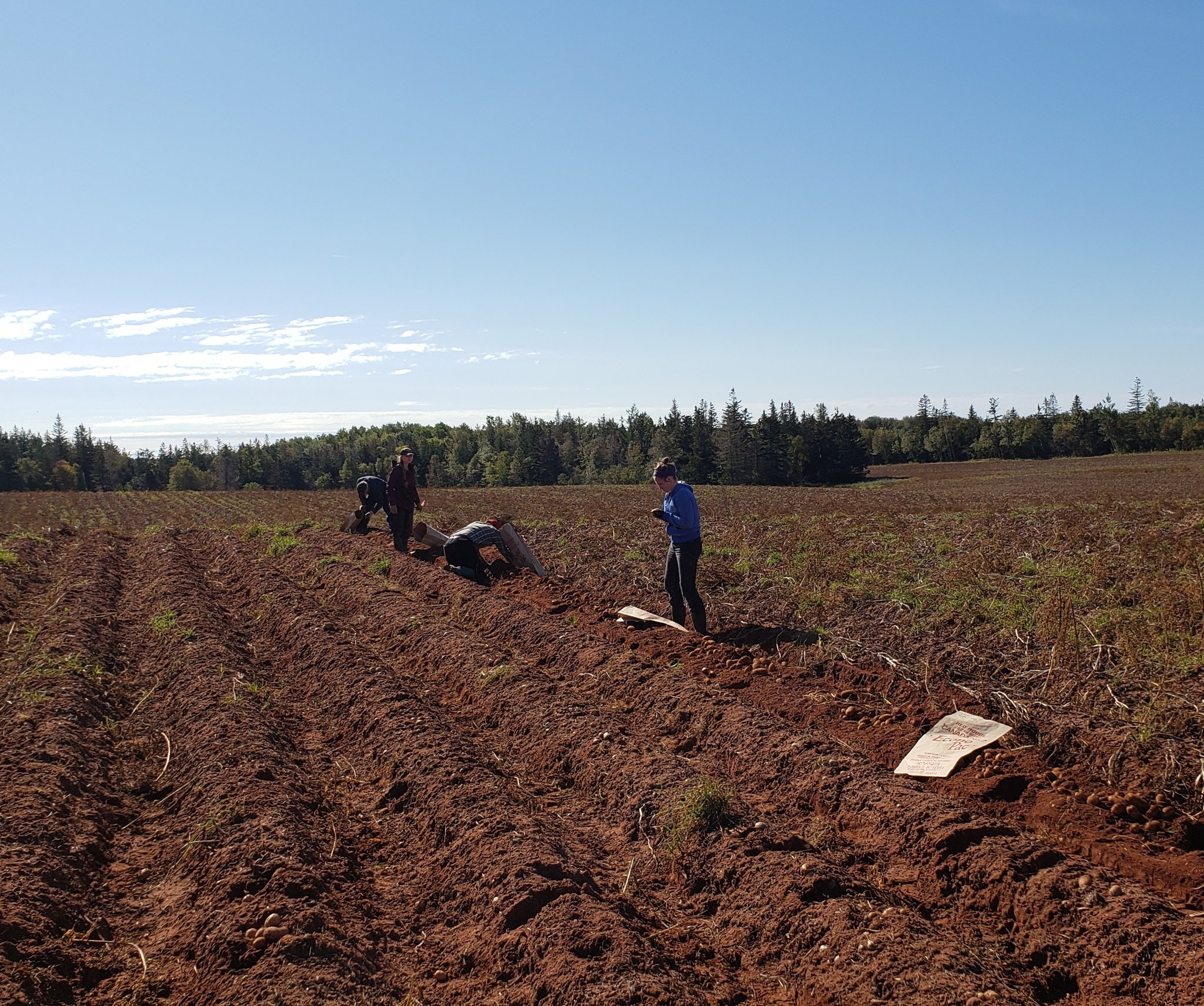
30 Sep Agronomy Update – Sept 30th
Hi everyone,
Just a quick update today. Everyone is busy with harvest and likely isn’t paying a ton of attention to emails, but just few things to pass along today.
- Morgan and I (plus a cast of other fantastic helpers from multiple groups) have been busy getting going on trial harvest. So far, the weather has been largely cooperative for getting a good start.
So far, the samples that we’ve harvested have been pretty encouraging. Across 12 trial fields that we’ve samples so far, we see an average of 298 cwt/acre, with 3 of these fields being seed fields. These are total yields (not yet graded) and using a conservative multiplication factor of 12. These are very rough estimates so far but gives you an idea of what we’re seeing. Also note that many of these trial fields are not the strongest fields on the farm, so are likely not reflective of some of the top yields that I’m hearing from some producers.
- In terms of tuber quality…I haven’t been finding too much rot so far in our digs. I’ve found the odd rotten tuber here and there, usually linked to pit rot from common scab. I have noticed that in some fields, the tubers at the bottom of the hill have the most raised lenticels and look to have the most potential problems. In a couple of varieties, growth cracks are more evident than previous years. Also hearing about higher incidence of hollow heart in certain varieties.
I have heard from a number of growers that they are running into some soft rot/water soak in early digs. Most of these growers are compensating by digging suspected problem areas last (or not at all) and putting any suspect acres in temporary storage or sending direct to the plant, where possible. There is no doubt that this storage season will be more complex that the last couple.
- If you are seeing tuber rot or lesions that you are not familiar with and that you think should be analyzed, the provincial Plant Disease Diagnostic Lab will be accepting samples until October 29th.
Link for Sample Submission Form (PDF)
How to collect and submit a representative sample (PDF) - Seeing some lovely looking cover crops starting to grow across the province. While the rain on Sunday slowed down potato harvest, it was beneficial to a lot of cover crops poking through the ground, particularly broadcasted barley/oats on ploughed ground.
If you are planning to establish some cover crops this fall, be sure to talk to Kyra Stiles with the PEI Department of Agriculture & Land to see if you are eligible for payments under their Winter Cover Crops BMP program, which pays $35/acre (up to $1000 per field), subject to eligibility.
- In our latest episode of SpudChat, I talk to Dr. Laura van Eerd of the University of Guelph (Ridgetown College) about her work on cover crops, including long-term cover crop trials with a variety of rotation crops, including vegetables. They found that growing fall cover crops after harvested crops six out of eight years not only lead to improvements in yields but also an increase in soil organic matter of 0.5%. Very impressive. Check out the episode at https://spudchat.buzzsprout.com/ or wherever you download your podcasts.
All the best to you all as harvest continues. Please continue to prioritize safe farming practices and looking after yourselves, both physically and mentally. As always, please feel free to reach out with any questions as the harvest season progresses. The best way to get in touch at the moment is phone or text at (902) 439-9386.
Thanks
Ryan
